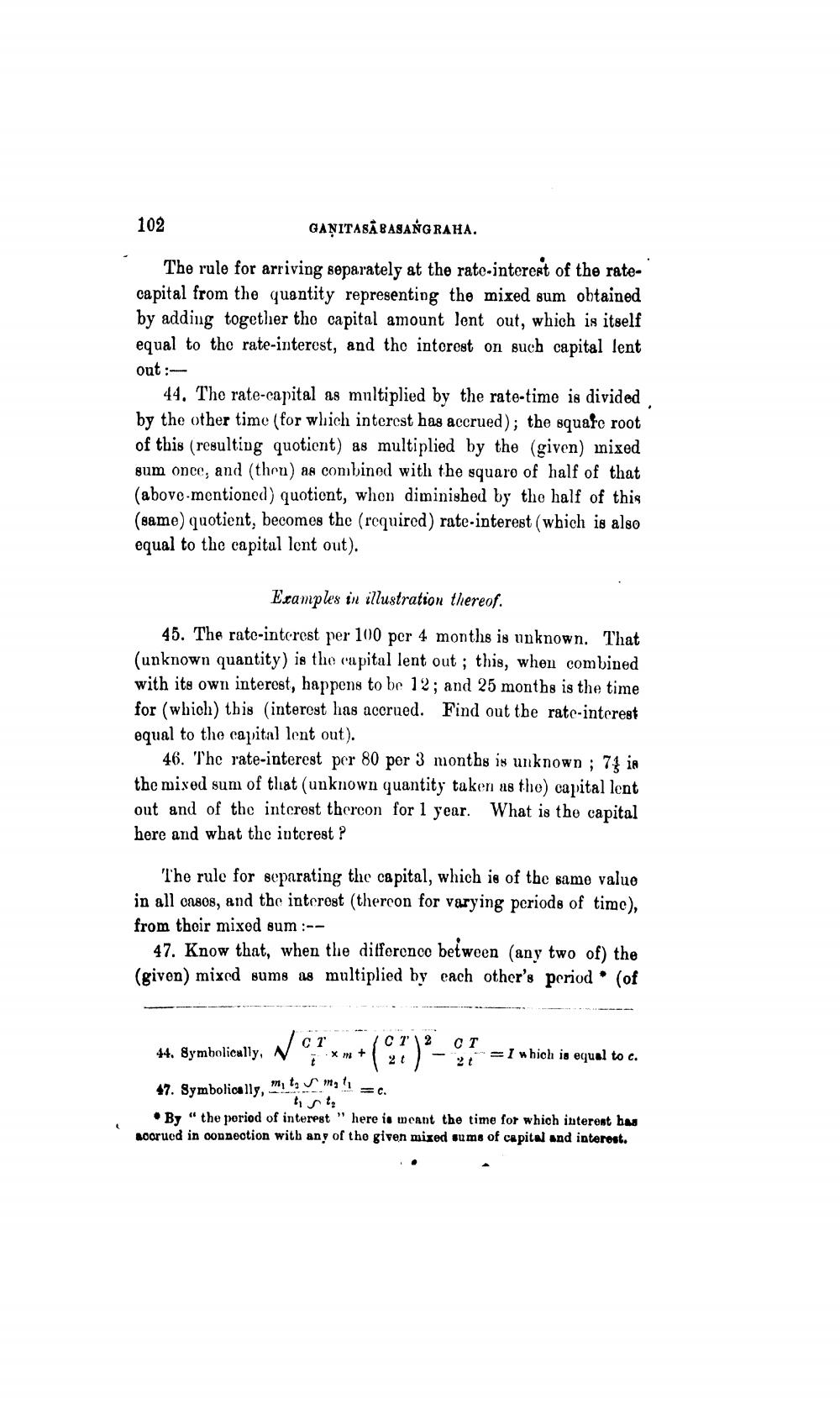________________
102
GANITASA BASANGRAHA.
The rule for arriving separately at the rate interest of the ratecapital from the quantity representing the mixed sum obtained by adding together the capital amount lent out, which is itself equal to the rate-interest, and the interest on such capital lent out:
44, The rate-capital as multiplied by the rate-time is divided by the other time (for which interest has accrued); the square root of this resulting quotient) as multiplied by the (given) mixed sum once, and (then) as combined with the square of half of that (above mentioned) quotient, when diminished by the half of this (same quotient, becomes the (required) rate-interest (which is also equal to the capital lent out).
Examples in illustration thereof.
45. The rate-interest per 100 per 4 months is unknown. That (unknown quantity) is the capital lent out; this, when combined with its own interest, happens to be 12; and 25 months is the time for (which) this interest has accrued. Find out the rate-interest equal to the capital lent out).
46. The rate-interest per 80 per 3 months is unknown ; 74 in the mixed sum of that (unknown quantity taken as the) capital lent out and of the interest thereon for 1 year. What is the capital here and what the interest ?
The rule for separating the capital, which is of the same value in all casos, and the interest (thercon for varying periods of time), from their mixed sum :--
47. Know that, when the difference between (any two of) the (given) mixed sums as multiplied by each other's period. (of
= I which is equal to c.
44. 8ymbolically, N 6?xm +()2 CT
N ē **+ ( 21 ) - 47. Symbolically, mit ungt
• By "the poriod of interest "here is meant the time for which interest has acorued in connection with any of the given mixed sums of capital and interest.




